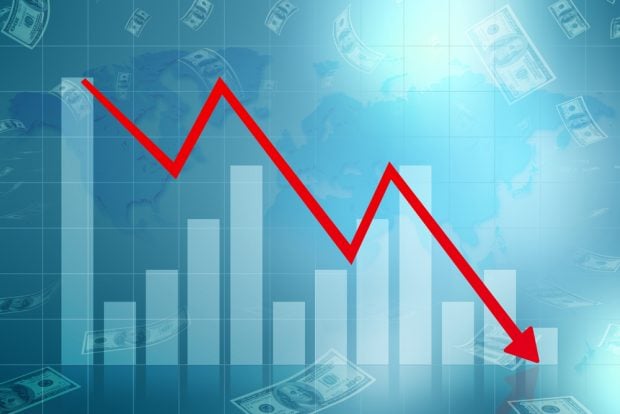 Credit: Bigc Studio/Adobe Stock
Credit: Bigc Studio/Adobe Stock
President Donald Trump’s decision to raise a great wall of tariffs Wednesday morning, then pare it back after lunch, caused markets to plunge and rally.
Some economists backed off recession predictions, but among those who stuck with them was a team of economists at America’s Credit Unions (AmCU).
Recommended For You
A half dozen of the trade group’s economists, former economists and Steve Rick of TruStage met Monday to complete the forecast for 2025 and make their first calls on 2026.
CU Times interviewed Chief Economist Curt Long 11 a.m. Wednesday on the condition the information would be under embargo until AmCU released the report to members Thursday morning.
Long started off noting that the group had raised the likelihood of a recession within the next 12 months from 20% in their January forecast to 60% on Monday.
“We do anticipate a recession,” Long told CU Times Wednesday morning. “I would clarify that our forecast group took the approach of everything that was in place at the time we met, which again was Monday, is we expected that to last over the duration of our forecast horizon.”
“So obviously a ton of uncertainty,” he said. “These policies could be changed tomorrow — for better or worse. We can't anticipate that, so we just assume that they would remain in place.”
“Tomorrow” betrayed a limit in Long’s imagination: Within three hours Trump put a large chunk of the tariffs — the so-called “reciprocal tariffs” announced with fanfare April 3 — on hold for 90 days.
Markets, which had been tanking, revived that afternoon. Goldman Sachs, which had raised its recession likelihood from 35% last week to 45% on Sunday and to 65% on Wednesday morning, retreated back to the 45% mark after the pause was announced.
But others did not retreat. Among them, J.P. Morgan and America’s Credit Unions stuck with 60%. As of 2 p.m. Thursday, markets had resumed their slide to the south.
J.P. Morgan’s “Daily Economic Briefing” distributed after Trump announced the pause noted that the remaining tariffs represent an $860 billion tax hike, or 2.5% of the year’s GDP. “Combined with the ongoing policy chaos on trade and domestic fiscal matters, along with the still-large losses in equity markets and hit to confidence, it remains difficult to see the U.S. avoiding recession,” it said.
The text of AmCU’s forecast released Thursday said their 60% likelihood was influenced by tariffs, and the reciprocal portion on pause could be restored in the future. “Meanwhile, the high tariffs on China and 10% tariffs more broadly will be a drag on growth.”
The uncertainty alone “threatens the outlook for consumption and investment,” the forecast said.
Also, the economy was already slowing in the first quarter. “The combined effects of job cuts in the federal government, an already low hiring rate, stubborn inflation and high interest rates all contributed to a loss of momentum even prior to the tariff announcements.”
But AmCU said it is expecting a mild recession. Household debt is relatively low and many homeowners’ have plenty of equity.
But the economists said the labor market “looks vulnerable” despite strong job growth in March. “Federal payroll reductions continue, and the private sector hiring pace is at 2014 levels. It would not take much of a spark to see a surge in joblessness.”
Besides its recession forecast, AmCU also did not change other details of its forecast between Monday and Thursday. AmCU now expects:
- Share balances will grow 8% this year and 7% next year. In January it expected 6.5% growth for 2025. Long said the personal savings rate is rising, which is usually a sign that consumers are squirreling more money away in anticipation of harder times.
- Loan balances will grow 3.5% this year and 5% next year. In January it forecast 5% growth for 2025. AmCU estimated Monday that non-commercial loan balances rose only 1.5% in the 12 months ending Feb. 28.
- Adjusted returns on average assets will be 0.40% this year, down from its January forecast of 0.75%. AmCU adjusts ROA by excluding loan loss provisions, which Long said he expects will deliver “a pretty significant hit to earnings.”
And most of the charges will come in the first half. "Credit unions tend to be very conservative in funding their loss reserves as the economic outlook becomes cloudy,” Long said.
The main factor in the provision will be the economic health of its members, including many who will suffer joblessness. AmCU predicted:
- The unemployment rate will end this year at 5.0% and next year at 5.5%. In January it forecast the rate would be 4.1% by December 2025.
- The 60-day-plus delinquency rate will be 1.1% of balances by the end of this year and 1.2% by the end of 2026.
- The net charge-off ratio will be 0.80% for this year and 0.85% for 2026. In January it forecast a 0.75% ratio for 2025.
© Touchpoint Markets, All Rights Reserved. Request academic re-use from www.copyright.com. All other uses, submit a request to [email protected]. For more inforrmation visit Asset & Logo Licensing.







